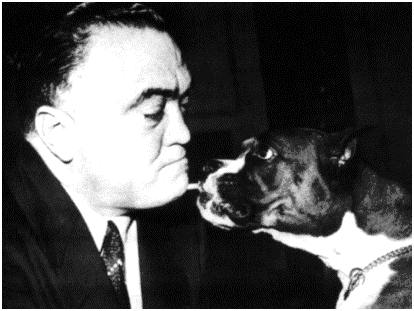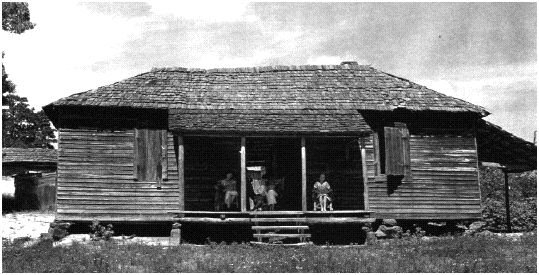The Secret History
Of the FBI
Ronald Kessler
(St. Martin's)

Hoover collected lurid memos on the Washington power elite, with especial attention to their night life. Even Nixon was afraid to can him because the FBI chief knew about his affair with Marianna Liu of Hong Kong.
'we're in the course of an investigation, and we by chance happened to come up with this data on your daughter. But we wanted you to know this. We realize you'd want to know it.' Well, Jesus, what does that tell the senator. From that time on, the senator's right in his pocket.
At one point in later years, Hoover demanded that his agents stop drinking coffee (not manly enough), and once wrote a memo: "Watch the borders." Since nothing more was specified, agents watched the Mexican and Canadian borders.
The Secret Life of J. Edgar Hoover, reported that a former wife of the chairman of Schenley Industries said that she saw Hoover at a party, "wearing a fluffy black dress, very fluffy, with flounces and lace stocking and high heels, and a black curly wig. He had makeup on and false eyelashes." She said that Roy Cohn was there, and introduced Hoover as "Mary," and that later he retired to a bedroom with "young blond boys."
Kessler's response: The director of the FBI simply could not have engaged in such activity at the Plaza, with a number of witnesses present, without having it leak out. He expresses surprise that this story has gone as far as it did: "That Hoover was a cross-dresser is now largely presumed to be a fact even by sophisticated people."
Hoover's secretary Helen Gandy worked for him from 1919 until his death in 1972. When he finally, thank god, died --- we thought he never would --- she took his Personal and Confidential files up to his house, all thirty-two cartons, and tore up each and every one of the files, and gave the pieces to the Washington Field office to shred. Kessler reports that it was "blackmail material on everyone from the Kennedys and Mickey Mantle to Supreme Court justices, twelve of whom had been overheard on FBI wiretaps."
L. Patrick Grey followed Hoover in office. He was called "three-day Grey" because he only worked Tuesdays, Wednesdays, and Thursdays. When it was discovered that he burned some key Watergate documents in his fireplace, his days were also numbered. John Ehrlichman quoted Aldous Huxley in discussing Grey's future: "I think we ought to let him hang there. Let him twist slowly, slowly in the wind." He did. Very slowly.
Clarence M. Kelley added some professionalism to the office, but later, there were the likes of Louis Freeh and William Sessions. The latter's wife told the author that her phones were being tapped by the bureau, and that there was a bug in their bedroom. Sessions liked wearing his FBI badge on his shirt: "If I go to an embassy party tonight," he said, "I'll be on bureau business."
There's more here than you would ever want to know about the FBI --- down to and including their work on 9/11. Since Mueller is an experienced journalist, The Bureau is fast-paced and thorough, but the earliest chapters dealing with J. Edgar Hoover are the best. They are cohesive, appalling, and impossible to put down.
Sweet Mister
Daniel Woodrell
(Putnam)
